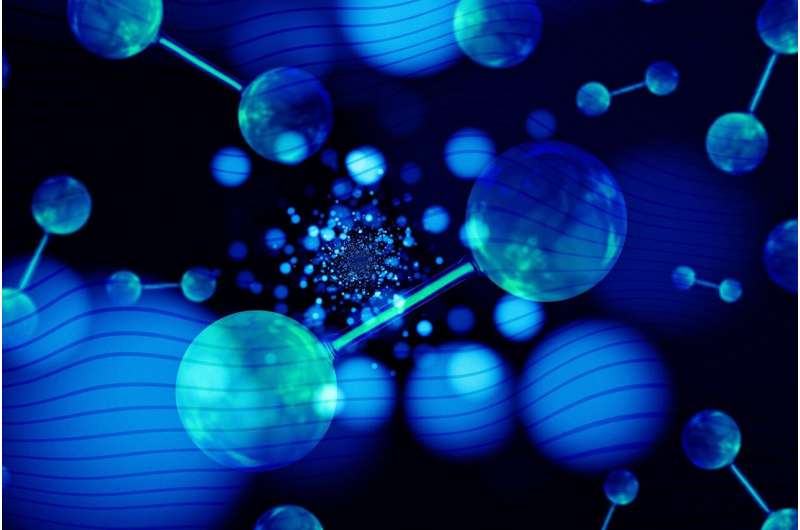This article has been reviewed according to Science X's editorial process and policies. Editors have highlighted the following attributes while ensuring the content's credibility:
fact-checked
peer-reviewed publication
trusted source
proofread
Researchers zero in on the underlying mechanism that causes alloys to crack when exposed to hydrogen-rich environments

When deciding what material to use for infrastructure projects, metals are often selected for their durability. However, if placed in a hydrogen-rich environment, like water, metals can become brittle and fail. Since the mid-19th century, this phenomenon, known as hydrogen embrittlement, has puzzled researchers with its unpredictable nature. Now, a study published in Science Advances brings us a step closer to predicting it with confidence.
The work is led by Dr. Mengying Liu from Washington and Lee University in collaboration with researchers at Texas A&M University. The team investigated formation of cracks in initially flawless, crack-free samples of a nickel-base alloy (Inconel 725), which is primarily known for its strength and corrosion resistance. There are currently several working hypotheses that attempt to explain hydrogen embrittlement. The results of this study show that one of the more well-known hypotheses—hydrogen enhanced localized plasticity (HELP)—is not applicable in the case of this alloy.
Plasticity, or irreversible deformation, is not uniform throughout a material, but is instead localized to certain points. HELP hypothesizes that cracks initiate at the points with the highest localized plasticity.
"As far as I know, ours is the first study that actually looks in real time to see where cracks initiate—and isn't at locations of highest localized plasticity," said co-author Dr. Michael J. Demkowicz, a professor in the Department of Materials Science and Engineering at Texas A&M University and Liu's Ph.D. advisor. "Our study tracks both the localized plasticity and the crack initiation locations in real time."
Tracking crack initiation in real time is crucial. When examining a sample after a crack has appeared, the hydrogen has already escaped from the material, making it impossible to understand the mechanism that led to the damage.
"Hydrogen easily escapes from metals, so you can't figure out what it does to embrittle a metal by examining specimens after they've been tested. You have to look while you're testing," said Demkowicz.
This study helps to lay the groundwork for better predictions of hydrogen embrittlement. In the future, hydrogen may replace fossil fuels as a clean energy source. If this change occurs, all of the infrastructure currently used to store and use fossil fuels would become susceptible to hydrogen embrittlement. Predicting embrittlement is crucial for preventing unexpected failures, making a future hydrogen economy possible.
The experiments for this study, as well as the preliminary data analysis, were conducted at Texas A&M, with Liu providing further data analysis and manuscript preparation at Washington and Lee. This paper is co-authored by Liu, Demkowicz and Texas A&M doctoral student Lai Jiang.
More information: Mengying Liu et al, Role of slip in hydrogen-assisted crack initiation in Ni-based alloy 725, Science Advances (2024). DOI: 10.1126/sciadv.ado2118
Journal information: Science Advances
Provided by Texas A&M University




















